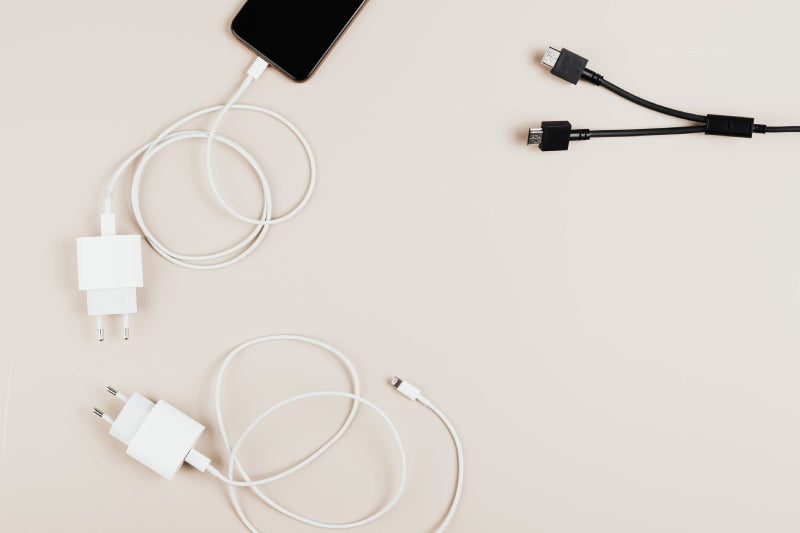When you need a new USB charger, you can be very confused because you probably don't know exactly how many wattages your device needs to function properly.
Although high-wattage chargers can charge low-power devices, they may not bring much improvement to the performance of low-power devices.
Charging a high-power device with a low-wattage charger may cause the charger to be overloaded and generate serious heat. That shortens the charger's life and accelerates the battery's aging, which is not worth the loss.
So, how do you know what wattage charger is suitable for your device? Today's article will teach you some practical tips to help you choose the USB charger of the right watts for your device.

Things You Must Know About USB Charger Watts
Most USB chargers are rated at 5 volts, but some can push higher voltages for faster charging. In addition to voltage, when choosing the right USB charger, ensure the charger provides enough current to charge your mobile device as fast as possible.
Generally speaking, USB chargers are marked with signs such as 5V⎓3A, 9V⎓3A, 11V⎓3A, 12V⎓2.25A, 10V⎓4A, etc., which means that the charger can actually output various powers.
5V⎓3A as an example, the charger can output a voltage of 5V and a current of 3A, and the output power is 5V x 3A = 15W. The different voltages and currents of the above groups mean that the USB charger can perform five different wattage combinations of charging power. The greater the charger's output power, the faster the charging speed, and V⎓A determines the output power of the USB charger.
For iPhones and Android Phones
Most iPhone and Android phones only need 5W (5V⎓1A) to charge. But if your mobile phone supports fast charging, whether it is iOS or Android, at least 18W wattage is required for fast charging.
Higher wattage can lead to faster charging, while higher-performance mobile phones require higher wattage for fast charging. For example, the iPhone 12 needs at least 20W for fast charging.
If you choose a higher-wattage USB charger with a fast-charging function, please don't forget to match a USB charging cable that supports fast-charging. Otherwise, the fast charging may be greatly reduced.
For iPads and Tablets
Tablets have larger screens and more features than phones, which means they have larger batteries and require more watts to charge.
Most tablets, such as iPad and Galaxy Tab, require at least 10(5V⎓2A) ~ 12W(5V⎓2.4A) to charge. Of course, some tablets also support fast charging, such as iPads that support up to 30W (5V⎓3A) fast charging power.
Quick Charge Devices
There are three common fast charging protocols, namely, Power Delivery (PD), Programmable Power Supply (PPS), and Quick Charge (QC). The wattage supported by different protocols is also different:
Power Delivery (PD) is a charging standard introduced by the USB Implementers Forum that allows fast charging of devices over a USB connection but is adapted to handle higher power. USB chargers with PD protocol typically have outputs of 20W, 25W, 30W, 45W, 65W, 96W, 100W, 120W, 140W, and higher.
Programmable Power Supply (PPS) is a battery-friendly fast charging protocol that allows for gradual changes in current and voltage. USB chargers that use this protocol can reduce conversion losses during charging, generate less heat, and extend battery lifespan. However, only a few Samsung models and laptops currently support PPS, with output powers of 25W, 45W, and 65W.
Quick Charge (QC), a battery charging protocol invented by Qualcomm, is used for managing power delivered over USB. Most of the best-selling smartphones on the market, especially Android phones, support this charging protocol. It supports fast charging output of up to 100W, but the most common output power on USB chargers is 18W.
Suppose a USB charger is included with the purchase of a mobile phone. In that case, it usually only uses one of the above charging protocols or the charging technology developed by the mobile phone manufacturer.
Many third-party charger options are available, and they generally support more than two of the above charging protocols to fit your various mobile devices better.
Before purchasing a USB charger, please confirm whether your device supports the above fast charging protocol. Then, select the appropriate output power to better use the fast charging function to save charging time.
How Many Watts Should I Choose for My Charger?
As previously stated, most smart device manufacturers' standard chargers have an output power of 5W. Still, devices are being updated at an increasing rate, and 5W is gradually being upgraded to higher wattages to match higher-performance devices.
If your device does not support fast charging and you are not concerned with charging speed, 5W or the minimum charging wattage that matches your device is sufficient.
If your device is high-performance, it requires a large battery to support multiple functions, which necessitates a higher charging wattage. If it's a phone, 20W is an excellent wattage that will charge most smartphones quickly and safely. If it is a laptop, you must choose a suitable USB charger from 30W to 140W according to the specific configuration.
